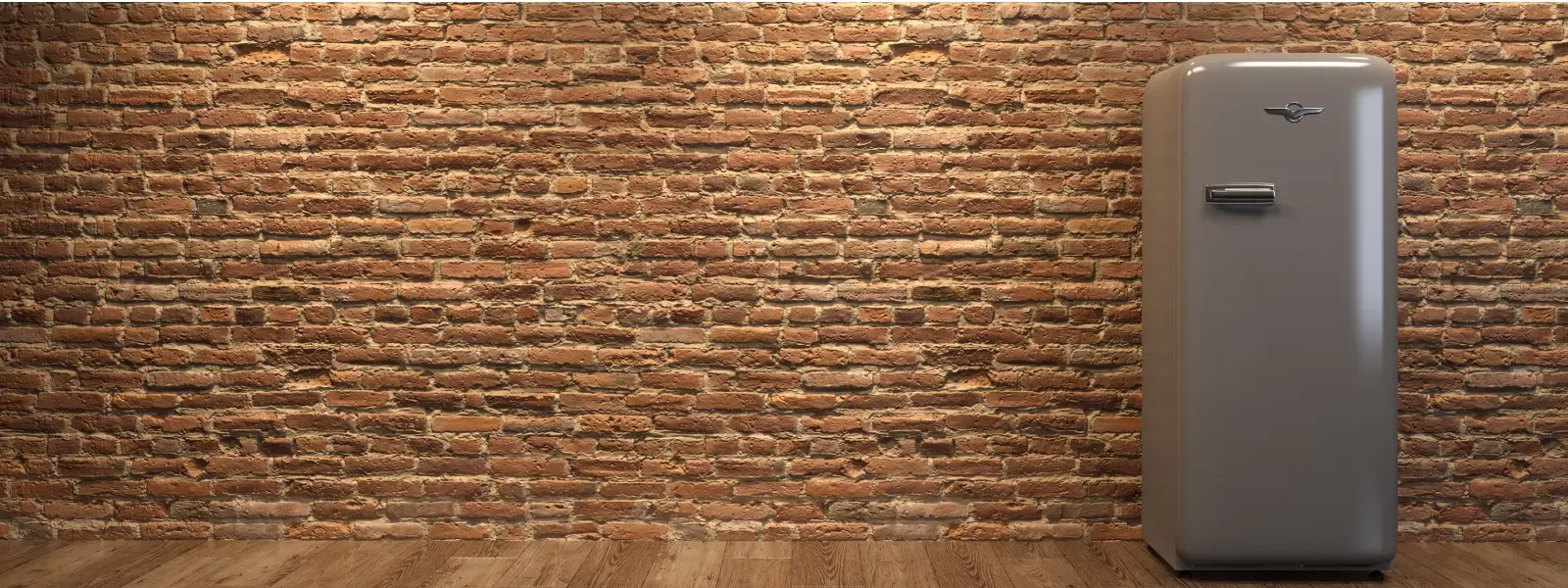
Home Appliances
•04 min read
Imagine walking into your kitchen and finding a puddle of water under your fridge—frustrating, right? Water coming out of fridge issues can be a hassle, but don’t worry; most refrigerator water leak problems can be resolved with a few simple steps. This guide will walk you through an easy-to-follow process to identify and fix the problem, ensuring your appliance runs efficiently for years to come.
There are several potential causes behind a fridge leaking water. A blocked defrost drain, for instance, is one of the most frequent culprits as ice and food particles build up, preventing proper drainage. Additionally, a damaged water supply line can lead to leaks and further complications. The drain pan, designed to catch excess water, might crack or overflow over time. Lastly, an improperly levelled refrigerator may not allow water to flow correctly, resulting in water pooling under refrigerator cabinets.
Before diving into troubleshooting, be observant. Look out for water pooling under your appliance, and inspect both the inside of your fridge and freezer compartments for puddles. Excess frost buildup on walls and wet or damaged door seals are significant indicators of underlying issues with your fridge. Recognising these symptoms early can help you take corrective measures quickly.
Your first step in fixing the water coming out of fridge is to locate and inspect the defrost drain. Usually found at the back of the fridge or in the freezer compartment, this drain can become blocked with food debris or ice buildup. Gently clear the blockage using warm water or a pipe cleaner. Paying close attention to this step can help resolve many common refrigerator drain issues.
Next, carefully check the water supply line that connects to your fridge. Look for any visible leaks or cracks along the line and examine the points where it connects to your appliance. Tightening any loose connections or replacing damaged sections can ensure the water pathway remains intact. When the water supply is in good condition, you are less likely to face recurring problems relating to a fridge leaking water.
Another possible source behind a refrigerator water leak is the drain pan located at the base of your fridge. Remove the drain pan and inspect it diligently for any signs of cracks or overflows. If the pan is dirty, clean it carefully; if it’s damaged, replacing it might be necessary to stop water pooling under refrigerator surfaces.
An often-overlooked aspect is whether your fridge is correctly levelled. Using a level tool, check that the fridge sits perfectly balanced. Adjust the leveling legs until the appliance is slightly tilted backward, ensuring water flows into the drain properly. A properly levelled fridge can significantly reduce the likelihood of water coming out of fridge issues over time.
At times, leaks can be specifically related to the water dispenser. If you notice issues with water pooling from this section, inspect the dispenser’s tubing and valve. Clogged dispenser nozzles can also contribute to the problem. Cleaning these components gently can often resolve the frustrating fridge water dispenser problem.
If you have followed the steps mentioned but continue to experience water coming out of the fridge, it might be time to seek expert help. Persistent leaks or signs of extensive internal damage should be assessed by a professional technician to avoid further complications.
Effective maintenance is crucial to prevent future appliance troubleshooting issues. It is advisable to clean the defrost drain periodically. A routine inspection of the water supply line every few months can help you catch potential problems before they escalate. Also, ensure the refrigerator remains level during installation and over time as minor shifts can occur.
In addition to routine cleaning and inspections, adopting some proactive measures can help keep your fridge in perfect condition. Avoid overloading the fridge or freezer compartments as excess weight might cause uneven cooling and drainage problems. Replacing worn-out seals and parts promptly can also ensure that your fridge functions optimally. By applying these refrigerator maintenance tips, you not only avoid troublesome leaks but also extend the life of your appliance.
Pro Tip from Tata Neu:
A clogged defrost drain is one of the most common causes of water pooling under your appliance. Regular cleaning can help you avoid messy leaks and potential repair costs. Plus, remember that routine maintenance is not just about safety—it also enhances the overall efficiency of your home systems.
This issue is commonly attributed to a blocked defrost drain, a faulty water supply line, or an improperly levelled appliance.
Begin by inspecting the defrost drain and water supply line. Follow the step-by-step guide to identify and address the source of the leak.
Regular maintenance like cleaning the defrost drain, ensuring proper fridge leveling, and monitoring water lines can help prevent issues with water pooling under refrigerator cabinets.
While a leak might not pose an immediate danger, it can lead to electrical hazards, mold growth, or even damage your flooring if left unattended. It is important to fix these issues as soon as possible.
Refrigerator water leaks can be a source of daily inconvenience, but by following these easy-to-implement steps, you can regain control over your kitchen environment. By understanding the causes—be it a clogged drain line or an unstable appliance—and applying preventive measures such as regular checks and proper maintenance, you keep your fridge in peak condition while minimising potential hazards. Technical care for your home appliances not only streamlines daily routines but can also translate into savings over time, with the added benefit of earning NeuCoins rewards when you shop smartly on Tata Neu.
This appliance troubleshooting guide is a must-read for anyone who believes that a well-maintained home is the key to a stress-free living space. Whether you are a tech enthusiast, a busy family, or a professional looking for reliability, these tips integrate seamlessly with best practices for everyday maintenance. Remember, maintaining your fridge with regular checks and balanced care means fewer disruptions, ensuring your home remains a safe and inviting space for all.